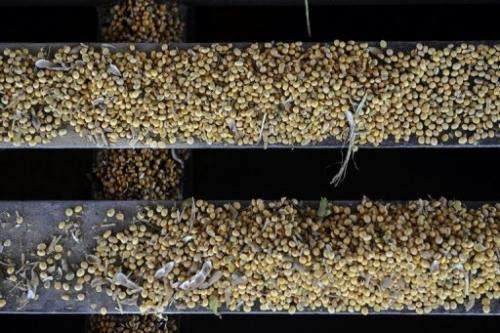Picture of soybeans taken in Argentina in 2008. Natto, the Japanese breakfast dish of fermented soybeans, has a smell likened to sweaty feet but researchers have come up with an unlikely way of making it less whiffy—using bacteria from Chinese dust clouds.
Natto, the Japanese breakfast dish of fermented soybeans, has a smell likened to sweaty feet but researchers have come up with an unlikely way of making it less whiffy—using bacteria from Chinese dust clouds.
Microscopic organisms found in the yellow fug that drifts over from China are almost identical to the reagent usually added to the beans to start the decomposition process, said Teruya Maki, an assistant professor at Kanazawa University.
The end result, labelled "Sky Natto", tastes like normal natto but doesn't have the overpowering smell that puts off so many first timers and divides Japan into those who love the protein-rich dish and those who hate it.
"We spotted this bacteria which is the same as that used for making natto," said Maki, who was studying the organisms in the Chinese dust cloud for their potential risks to human health.
After a test batch, Maki and his team persuaded a local natto manufacturer to adopt the recipe and produce Sky Natto for sale at the university, with an eye on cracking the local market.
Sky Natto has a much less overwhelming smell than regular natto and has greater nutritional value because it contains more magnesium and calcium, he said.
Clouds of yellow dust travel from northern China during Spring when winds whip up sand and transport it thousands of miles (kilometres), sometimes shrouding parts of Japan and the Korean peninsula.
Natto, while not widely known outside Japan, can be found in health food shops in the West.
(c) 2012 AFP





















